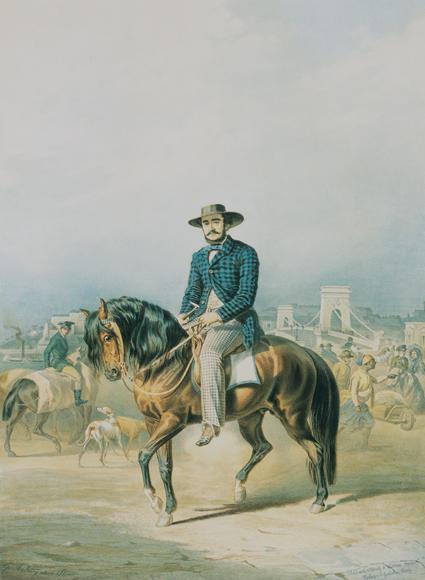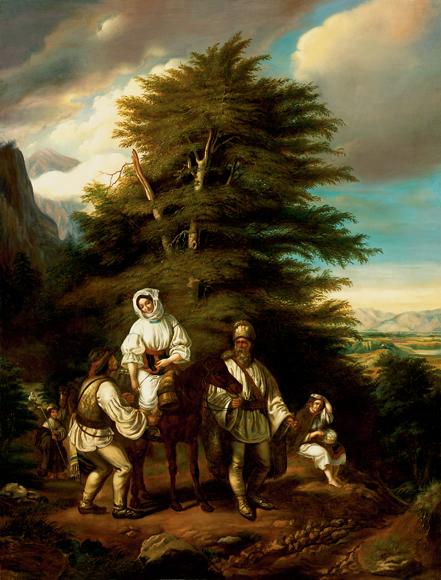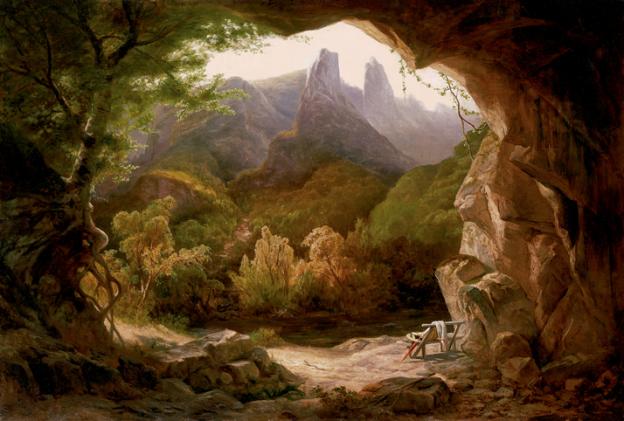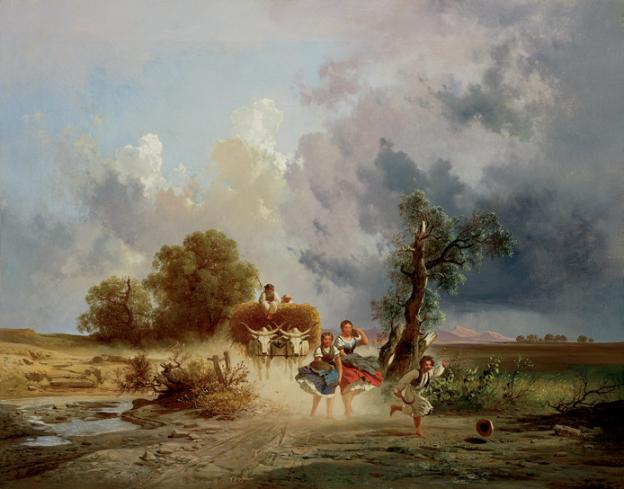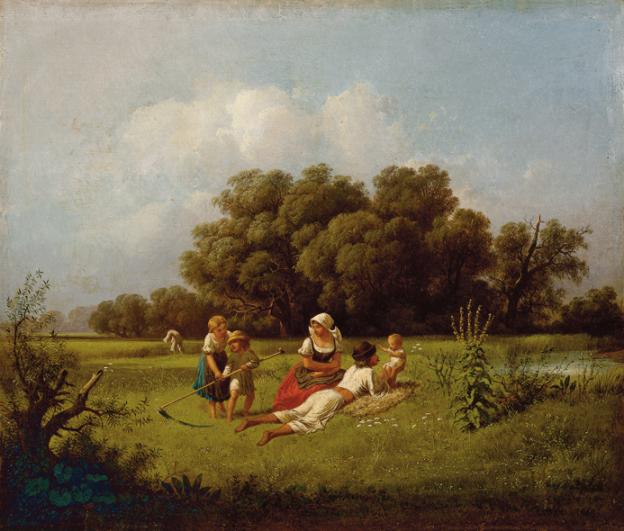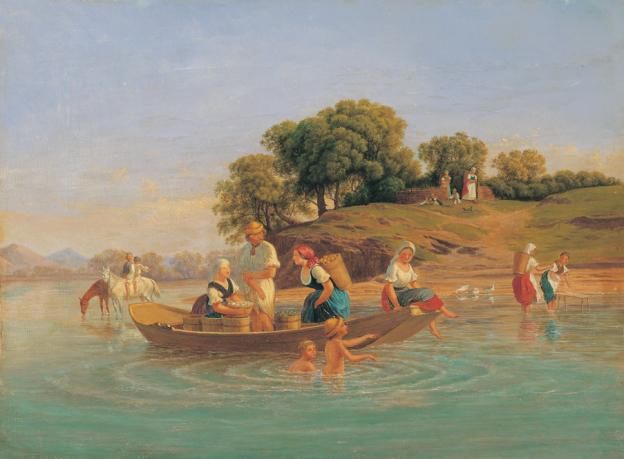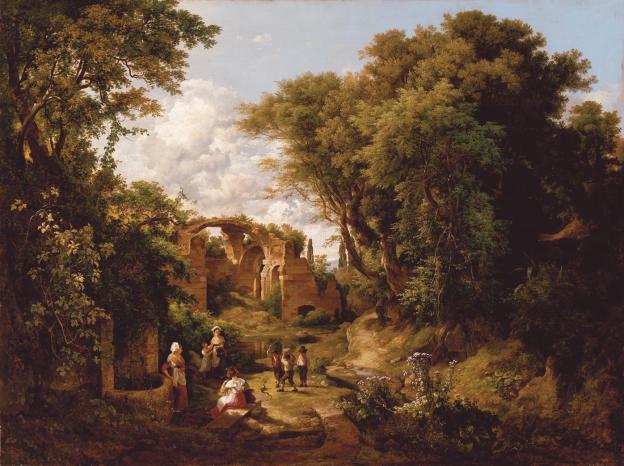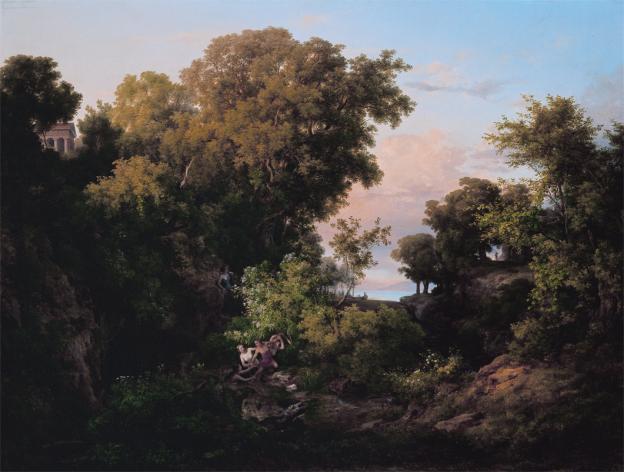Not only here, but all over Europe history painting was the most valued style in the Romantic period. The heroes of the past conveyed a valid message for the present. Among the pictures well-known from text books are Women of Eger by Bertalan Székely, depicting the heroic women defending Eger Castle against the Turks in1552, and the painting by Viktor Madarász of Péter Zrínyi and Ferenc Frangepán bidding each other farewell in the Wiener Neustadt prison before being executed in 1671. These pictures became symbols of the national resistance as did the portrait of Ferenc Rákóczi by Gyula Benczúr. Landscape painting too became a subject in its own right during the romantic period. Works by the most significant artists in this genre (Károly Markó the elder, Antal Ligeti, Károly Telepy) are on show in the exhibition. Genre painting was present too: József Borsos is represented by a rare pendant pair (Dusk, The Painter’s Dream) and there is a scene from the plains by Károly Sterio in the style of a folk genre painting in which he depicts a figure on horseback beside a sweep-pole well, reminiscent of the most eminent character at the time, Count István Széchenyi.
Tihany
-
